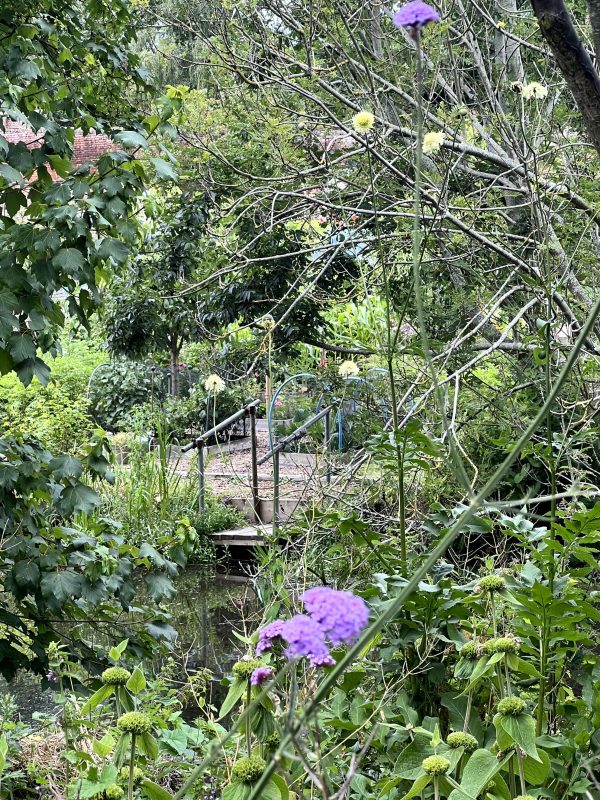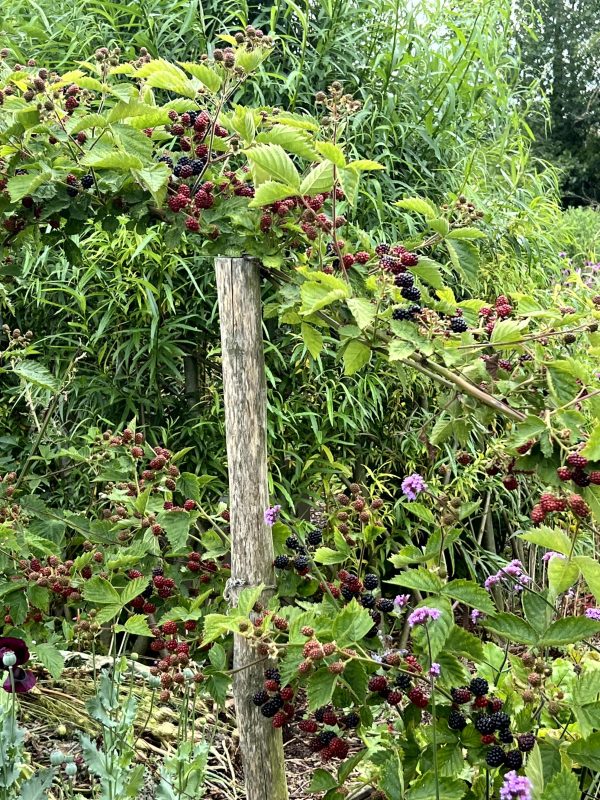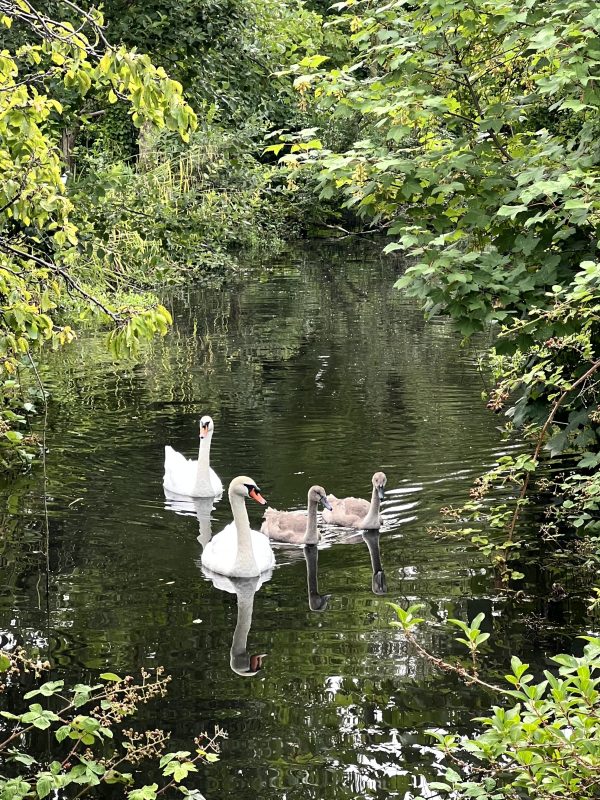Words Amicia Photographs Amicia

The gate to the Stonebridge Allotments
To step through the nondescript wooden gate on Flood Lane into Faversham’s Stonebridge Allotments is to enter a secret paradise. One immediately feels transported to a magical, if slightly eccentric, world and one that teems with wildlife.

Enchanted and secret gardens on Faversham’s doorstep

Beehives

Interspersing vegetables with flowers. Davington Hill in the background

View up to Brent Hill

Fruits of the work of an allotmenteer

A spot to rest after digging

Smart raised beds
I had no idea that the Allotments were so extensive – there are 134 in all. Each is uniquely different, brimming with the character of their proprietor. Some are lovingly weeded with not a single tendril or weed to be seen, while others show a pleasing dishevelment. Some are devoted exclusively to the growing of vegetables, while others, in the rural French fashion, intersperse vegetables with flowers for cutting. There is a beekeeper with several buzzing beehives, the odd crazily-dressed scarecrow and random chairs and benches scattered hither and thither. At every turn there is something to delight whether it be the view of the spire of Davington church, a family of swans gliding along, or just a row of splendidly tall sun flowers. The site covers 2.7 acres and is truly enchanting.

Cheerful scarecrow

Rather sinister scarecrow

A scarecrow you wouldn’t mess with

A traditional straw-brained scarecrow
Faversham Life’s very own Justin Croft has an allotment abutting the Westbrook stream which means that it is under water for some of the year. Nonetheless, he grows delicious fruit and vegetables and proudly shows me his fine apricot tree laden with juicy plump fruit at time of writing, purchased from Faversham-based Edible Culture. Commercial apricot production started in the UK less than 20 years ago. In 2012, 40 tonnes were collected, but this year 250 tonnes are expected. Kent is fast becoming the centre of apricot growing, making Justin right on trend!

Justin Croft counts his apricots
Beneath this bucolic idyll, various clues can be spotted revealing that the whole site was once an integral part of Faversham’s famous gunpowder industry. In the past, there were four small gunpowder works on the site which became the Home Works. The waterways in the allotments are the original ‘leets’ which were used to transport the gunpowder without risk of sparking. There are four main channels and two outlets that sluice into the tidal creek that control the levels over the whole area. The attractive brick wall at the Davington end of the Allotments was a blast wall constructed to contain any explosion. There was also once an orchard on the site. The natural-looking Stonebridge Pond is artificial and was dug as a reservoir for the gunpowder works’ water mills.

These stone wheels are left over from the gunpowder works

The sluice
The site has been owned by Faversham Town Council since 1953 and is managed by the Stonebridge Allotment Society. Currently there is a waiting list exceeding 60 people. ‘Demand has greatly increased over the past 10 years,’ says Bob Gomes, a member of the committee. The allotments are measured in ‘rods’, an ancient measure, with on average each plot measuring 2.5 rods (about 75 square yards). Bob points out that when the allotments first started, they measured 10 rods but then their purpose was to feed a family throughout the year. These days, allotments are generally regarded as a leisure activity hence the shrinkage in size.

Map of Stonebridge Allotments

Bob Gomes, committee member
One of the attractions of the Stonebridge Allotments is the irregularity of the various plots as they have to be fitted in amongst all the leets. The newcomer needs to be guided down the esoteric pathways, over the small bridges and there is often a feeling of doubling back on yourself. Different plots emerge in quite an unexpected way, and the winding waterways, established trees and areas left uncultivated (so good for the wildlife) mean that one can feel quite secluded in the Allotments. There are some communal activities, an annual plant swap in May and several apple-pressing days, but Justin observes: ‘People are very respectful of each other’s plots and privacy.’

Looking across Stonebridge Pond

Flowers and vegetables

The waterways teem with life

Davington Church spire in the distance

Leaving some areas uncultivated brings unplanned delights such as this pyramidal orchid
An avid bird spotter, Bob has recorded 81 different species in the Allotments, with many breeding here including Cetti’s warblers and grey wagtails. Kingfishers spend the winter here and Kestrels, Little Egrets, Mistle Thrushes, Water Rails and Sedge Warblers are frequent visitors. Sometimes even exotic Mandarin ducks can be seen. The mammal population includes field and bank moles and wood mice, and an unexpected arrival this March was a young common dolphin who found itself stranded, was rescued and sent on its way in the Swale. Bob says: ‘It’s a real green oasis with lots of water and mature trees in the middle of town.’
www.stonebridgeallotmentsociety.org
Text: Amicia. Photographs: Amicia
FAVERSHAM LIFE IS OFF ON ITS HOLIDAYS FOR AUGUST BUT WILL BE BACK WITH LOTS OF ENTHRALLING ARTICLES IN SEPTEMBER.